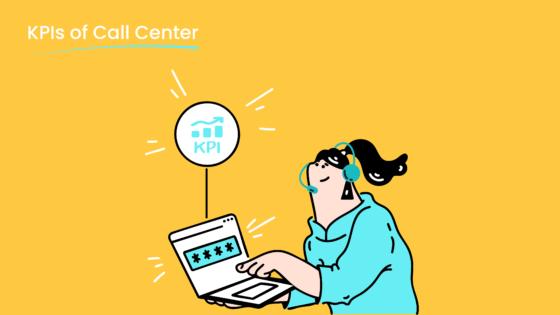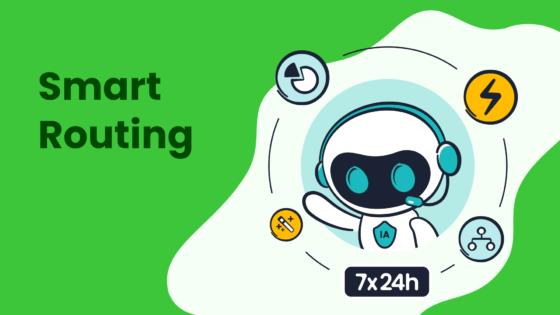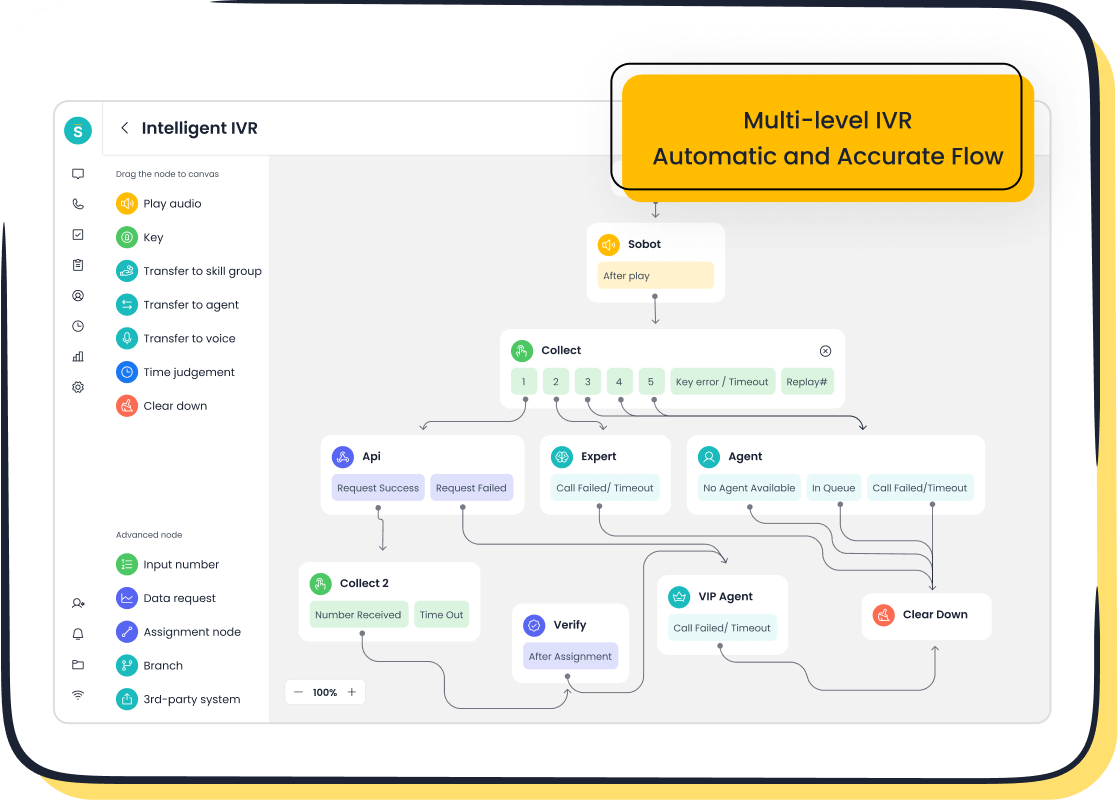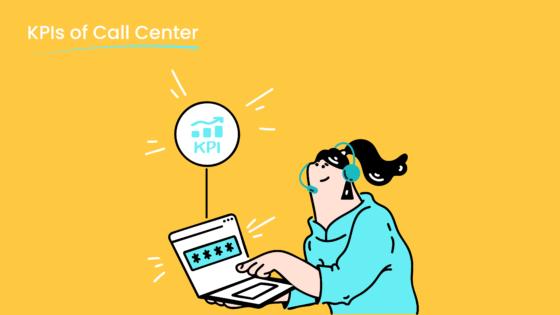Why Calls Handled Matter in Customer Interactions

Calls handled (CH) play a vital role in shaping your customer experience. Every interaction matters, as it directly impacts satisfaction and loyalty. Research shows that 76% of customers are willing to go out of their way for superior customer service, while 86% would switch brands for better service. These numbers highlight how critical effective call handling is for building trust and retaining customers.

When you prioritize seamless customer interactions, you create positive experiences that strengthen your brand reputation. Tools like Sobot's Voice/Call Center can help you achieve this by streamlining operations and ensuring every call contributes to a better customer journey.
Understanding "Calls Handled" in Call Centers
Definition and Importance
What Are "Calls Handled" in Customer Support?
Calls handled refers to the total number of customer interactions managed by a call center, including both inbound and outbound calls. These interactions often involve processes like intelligent voice response (IVR) systems or direct assistance from agents. Whether resolving issues, answering inquiries, or completing sales, calls handled represent the core of customer support operations.
| Definition | Importance |
|---|---|
| Call centers handle both inbound and outbound calls, facilitating customer interactions through processes like IVR and agent assistance. | Call centers meet high customer service expectations, providing 24/7 availability and opportunities for personal connection with customers. |
Sobot’s Voice/Call Center enhances this process by offering features like smart call routing and AI-powered voicebots, ensuring every call is handled efficiently and effectively.
Why Calls Handled Are a Key Metric in Call Centers
Calls handled is a critical metric in call center management. It reflects how well your team manages customer interactions and measures operational efficiency. High call volumes with quick resolutions indicate a well-functioning system. Metrics like first contact resolution (FCR) and average handle time (AHT) often tie directly to calls handled, helping you gauge customer satisfaction and agent productivity.
Sobot’s unified workspace simplifies call center management by integrating customer data and communication tools, enabling agents to handle more calls without compromising quality.
Types of Calls Managed
Inbound and Outbound Calls
Call centers manage two primary types of calls: inbound and outbound. Inbound calls come from customers seeking support, making inquiries, or resolving issues. Inbound call centers focus on delivering quick and accurate responses to enhance customer satisfaction. Outbound calls, on the other hand, are initiated by agents for purposes like sales, follow-ups, or surveys. Outbound call centers aim to build customer relationships and drive business growth.

Sobot supports both inbound and outbound call centers with features like global number availability and time zone support, ensuring seamless communication across regions.
Support, Sales, and Inquiry Calls
Call centers handle a variety of call types, including support, sales, and inquiry calls. Support calls address customer issues, ensuring problems are resolved efficiently. Sales calls focus on promoting products or services, often requiring persuasive communication. Inquiry calls involve answering questions about products, services, or policies.
Sobot’s AI-powered voicebot and smart call routing streamline these processes, enabling agents to focus on delivering exceptional customer experiences.
The Role of Calls Handled in Enhancing Customer Experience

Key Metrics for Measuring Success
First-Call Resolution (FCR) and Its Impact
First-call resolution (FCR) measures how often customer issues are resolved during the first interaction. This metric is crucial for improving customer satisfaction and reducing the need for follow-up calls. Higher FCR rates often lead to better customer loyalty, as customers value quick and effective solutions. Studies show that increased FCR reduces operating costs and enhances both customer and employee satisfaction.

Sobot’s Voice/Call Center helps you achieve higher FCR rates by using features like AI-powered voicebots and smart call routing. These tools ensure that customers connect with the right agents or resources immediately, minimizing delays and improving their overall experience.
Average Handle Time (AHT) and Efficiency
Average handle time (AHT) tracks the time agents spend resolving customer interactions. Lower AHT indicates efficient call handling, which benefits both customers and businesses. Efficient handling reduces wait times and ensures agents can assist more customers without compromising quality.
Sobot’s unified workspace integrates customer data and communication tools, enabling agents to resolve issues faster. By reducing AHT, you can enhance customer satisfaction while maintaining operational efficiency.
Building Customer Trust and Loyalty
Quick Resolutions and Positive Experiences
Quick resolutions create positive customer experiences. When customers receive prompt support, they feel valued and are more likely to trust your brand. Research highlights that addressing inquiries promptly improves market performance and fosters customer loyalty.
Sobot’s intelligent IVR and AI-powered voicebot streamline call handling, ensuring customers receive timely assistance. These tools not only improve efficiency but also contribute to building long-term trust.
Reducing Frustration Through Seamless Interactions
Seamless interactions reduce customer frustration. When calls are routed efficiently and resolved quickly, customers experience less stress. Skilled agents and advanced tools play a vital role in achieving this.
Sobot’s smart call routing ensures customers connect with the right agents, while its AI-powered solutions handle repetitive tasks. This approach allows agents to focus on complex issues, creating smoother customer interactions.
Long-Term Benefits for Customer Retention
How Sobot's Voice/Call Center Drives Repeat Business
Efficient call handling directly impacts customer retention. For example, Vodafone improved customer experiences by migrating to a cloud-based system. A smaller team now manages tasks more efficiently, providing 24/7 support and enhancing customer satisfaction.
Sobot’s Voice/Call Center offers similar benefits. Its stable system and global number availability ensure reliable communication, helping you retain customers and encourage repeat business.
Word-of-Mouth and Brand Advocacy
Satisfied customers often share their positive experiences, boosting your brand’s reputation. Companies like Wyze Labs have gained industry recognition by prioritizing customer experience. Strong call handling practices lead to word-of-mouth referrals and increased customer loyalty.
Sobot’s solutions empower you to deliver exceptional service, turning satisfied customers into brand advocates. By focusing on calls handled, you can build a loyal customer base and enhance your market presence.
Operational Advantages of Effective Call Handling
Improving Call Center Efficiency
Streamlining Operations with Sobot's Unified Workspace
Efficient call handling begins with streamlined operations. A unified workspace allows agents to manage inbound and outbound calls, customer data, and communication tools from a single platform. This integration reduces the time spent switching between systems, enabling agents to focus on delivering quality customer service.

Sobot’s unified workspace simplifies workflows by consolidating all customer interactions into one interface. This approach improves efficiency and ensures agents can handle more calls without compromising service quality. Regular performance assessments also help identify trends and refine strategies, further enhancing operational efficiency.
Reducing Call Backlogs and Wait Times
Call backlogs and long wait times frustrate customers and strain agents. Intelligent call routing and predictive analytics address these challenges by directing calls to the right agents and forecasting call volumes. This ensures optimal staffing during peak hours.
Sobot’s smart call routing minimizes handling times and improves first-call resolution rates. By reducing backlogs, your call center can maintain high customer satisfaction and operational efficiency.
Cost Optimization
Lowering Costs Through Automation and AI
Automation and AI reduce operational costs by handling repetitive tasks and improving productivity. AI-powered tools like voicebots can manage routine inquiries, allowing agents to focus on complex issues. This reduces the need for additional staffing and enhances customer satisfaction.
Sobot’s AI-powered voicebot provides scalable and cost-effective solutions. It decreases wait times and improves service efficiency, making it an essential tool for modern call centers.
Reducing Escalations with Intelligent IVR
Intelligent IVR systems resolve many customer issues without agent intervention. By providing self-service options and routing calls effectively, IVR reduces escalations and operational costs.

Sobot’s drag-and-drop IVR builder allows you to customize workflows and menus, ensuring customers receive the right support quickly. This approach enhances efficiency while lowering costs.
Enhancing Agent Productivity
Empowering Agents with Sobot's AI-Powered Tools
Advanced tools empower agents to perform better. AI assistance increases resolution rates and reduces workloads, enabling agents to handle more calls efficiently. For example, studies show that AI can boost novice agent productivity by 34%, helping them match experienced agents in just two months.
Sobot’s AI-powered tools provide real-time insights and support, allowing agents to deliver exceptional customer service. This not only improves productivity but also enhances job satisfaction.
Reducing Burnout Through Efficient Workflows
Burnout is a common issue in call centers. Efficient workflows and workload management reduce stress and improve agent well-being. Tools like workforce engagement management (WEM) systems monitor workloads and provide actionable insights to create a supportive environment.
Sobot’s unified workspace and real-time analytics help managers balance workloads effectively. By reducing burnout, your agents can maintain high performance and deliver better customer experiences.
Strategies to Improve Calls Handled in Call Centers

Training and Development for Agents
Importance of Communication and Soft Skills
Strong communication and soft skills are essential for effective customer interactions. Agents with these skills can empathize with customers, resolve issues efficiently, and build trust. For example, agents trained in active listening can better understand customer concerns, leading to quicker resolutions. Studies show that targeted coaching improves agent performance by addressing specific skill gaps.
You can evaluate the impact of training programs using metrics like first-call resolution rates and customer satisfaction scores. Collecting feedback from agents and customers also helps refine training strategies, ensuring continuous improvement in customer service practices.
Continuous Learning and Feedback Mechanisms
Continuous learning keeps agents updated on customer service best practices. Regular feedback sessions help agents identify areas for improvement and build confidence. For instance, analyzing call recordings can reveal customer pain points, enabling agents to address them more effectively.
Sobot’s unified workspace supports agent development by providing real-time insights and performance data. This allows managers to offer targeted coaching, enhancing both individual and team performance.
Leveraging Technology for Better Call Handling
Sobot's AI-Powered Voicebot and Smart Call Routing
AI-powered tools like Sobot’s voicebot optimize call handling by resolving routine issues quickly. These tools provide a personalized experience, making customers feel valued. Smart call routing ensures customers connect with the right agents, reducing wait times and improving satisfaction.
Call centers using AI technologies report a 27% improvement in customer satisfaction scores and significant cost savings. By analyzing call traffic patterns, these tools anticipate peak periods, maximizing agent utilization and enhancing service quality.
Integration with CRM for Enhanced Customer Insights
Integrating call center systems with customer relationship management (CRM) platforms improves customer communication. This integration provides agents with a complete view of customer interactions, enabling personalized service.
Sobot’s seamless CRM integration enhances customer support by consolidating data into one platform. This approach streamlines workflows, reduces call handling times, and strengthens customer relationships.
Quality Assurance and Monitoring
Regular Call Audits and Performance Reviews
Call audits and performance reviews ensure consistent service quality. Metrics like call resolution rates and average handling time help assess agent performance. For example, high resolution rates indicate effective call handling, while low handling times reflect efficiency.
Sobot’s monitoring tools provide real-time analytics, helping managers identify trends and refine strategies. Regular reviews also foster a culture of accountability, ensuring agents deliver exceptional customer service.
Setting Clear Metrics for Success
Clear metrics guide agents toward achieving call center goals. Metrics like customer satisfaction scores and first-call resolution rates highlight areas for improvement. Predictive analysis of call volume trends also helps optimize staffing, ensuring better service during peak hours.
Sobot’s data analytics tools simplify metric tracking, enabling you to measure success and implement effective practices. This focus on quality ensures your call center consistently meets customer expectations.
Why Prioritizing Calls Handled is Crucial for Business Success
Aligning Call Handling with Business Goals
Supporting Customer-Centric Strategies with Sobot
Aligning your call center operations with customer-centric strategies ensures better outcomes for both your business and your customers. Companies like Vodafone have successfully implemented digital solutions to enable self-service options, reducing strain on their call centers while improving the overall customer experience. Delivery Hero streamlined its account recovery process, boosting employee productivity and minimizing downtime.
Sobot’s Voice/Call Center supports these strategies by integrating AI-powered tools and smart call routing. These features help you deliver personalized service while maintaining operational efficiency. Research from the American Customer Satisfaction Index shows that companies excelling in customer satisfaction often experience better financial performance, proving the value of customer-focused approaches.
The Link Between Call Handling and Revenue Growth
Effective call handling directly impacts your revenue growth. Metrics like first-call resolution (FCR) and customer satisfaction (CSAT) highlight how well your call center meets customer needs. High FCR rates reduce follow-up calls, saving time and resources. Improved CSAT scores reflect positive customer experiences, leading to repeat business and referrals.
| KPI | Description |
|---|---|
| Average Handle Time (AHT) | The average time taken to handle a call, aiming for efficiency without compromising quality. |
| First Call Resolution (FCR) | The percentage of calls resolved during the first interaction, indicating effective issue handling. |
| Customer Satisfaction (CSAT) | A measure of customer satisfaction from interactions, reflecting positive experiences. |
| Net Promoter Score (NPS) | A score indicating customer likelihood to recommend the company, showing strong relationships. |
Sobot’s unified workspace and AI-powered voicebot help you achieve these KPIs, ensuring your call center contributes to both customer satisfaction and revenue growth.
Staying Competitive in a Customer-Driven Market
Meeting Evolving Customer Expectations
Customers today expect quick, efficient, and personalized service. Superior call handling meets these expectations, enhancing customer satisfaction and loyalty. Companies leveraging AI and machine learning, like Aucera, have seen a 14% increase in agent efficiency, particularly benefiting less experienced staff.
Sobot’s intelligent IVR and global number availability ensure your call center operates seamlessly across regions. These tools help you adapt to changing customer needs, keeping your business ahead in a competitive market.
Differentiating Through Superior Service
Exceptional service sets your business apart. Superior call handling improves customer satisfaction, which directly impacts your market position. Ongoing training programs for agents enhance their skills, ensuring consistent service quality. Companies with high customer satisfaction often see better financial performance and market valuation.
Sobot’s solutions empower your agents with AI-driven tools and real-time insights. These features enable your team to deliver outstanding service, turning satisfied customers into loyal advocates for your brand.
Calls handled remain a cornerstone of successful customer service. They directly influence satisfaction, loyalty, and operational efficiency. Businesses that prioritize this metric often see measurable benefits. For instance:
| Company | Benefit Achieved | Description |
|---|---|---|
| Vodafone | Enhanced efficiency | Reduced support team from 20 to 5, improving operational productivity through cloud migration. |
| Ty Inc. | Improved communication and flexibility | Transitioned to cloud-based solutions, enhancing internal and external communication. |
| Wyze Labs | Recognition for customer service excellence | Achieved accolades for innovative customer service strategies, reflecting operational success. |
Sobot's Voice/Call Center solutions empower you to achieve similar results. By integrating advanced tools like AI-powered voicebots and smart call routing, you can streamline operations and deliver exceptional service. Remember, 76% of consumers are willing to go the extra mile for superior service, and 86% would switch brands for better experiences. Prioritizing calls handled not only enhances customer satisfaction but also gives your business a competitive edge in the market.
📈 Companies with high customer satisfaction scores often outperform others in the stock market, proving the value of exceptional service.
FAQ
What does "calls handled" mean in a call center?
"Calls handled" refers to the total number of customer calls managed by your call center. This includes inbound and outbound calls. It measures how effectively your team resolves customer inquiries, supports sales, or addresses issues. Tools like Sobot’s Voice/Call Center streamline this process for better efficiency.
How can improving calls handled benefit my business?
Efficiently handling calls enhances customer satisfaction and loyalty. Studies show that 86% of customers switch brands for better service. Sobot’s smart call routing and AI-powered voicebot help you resolve issues faster, improving metrics like first-call resolution (FCR) and average handle time (AHT).
What tools can optimize call handling in my call center?
AI-powered tools like Sobot’s Voice/Call Center improve call handling. Features such as intelligent IVR, unified workspace, and global number availability ensure seamless customer interactions. These tools reduce wait times, enhance agent productivity, and improve customer satisfaction.
How does Sobot help reduce call center costs?
Sobot’s automation tools, like its AI-powered voicebot, handle repetitive tasks efficiently. This reduces the need for additional staffing. Intelligent IVR systems also minimize escalations, cutting operational costs while maintaining high service quality.
Why is first-call resolution (FCR) important for calls handled?
FCR measures how often customer issues get resolved in the first interaction. Higher FCR rates improve customer satisfaction and reduce follow-up calls. Sobot’s smart call routing connects customers to the right agents, helping you achieve better FCR rates and enhancing overall efficiency.
See Also
Understanding The Efficiency Of Call Center Automation
Effective Strategies For Quality Management In Call Centers
Essential Principles Of QMS For Call Centers Explained
